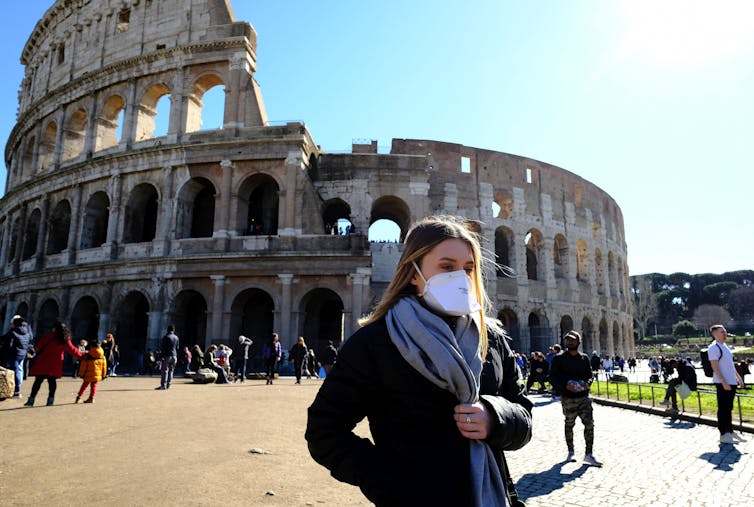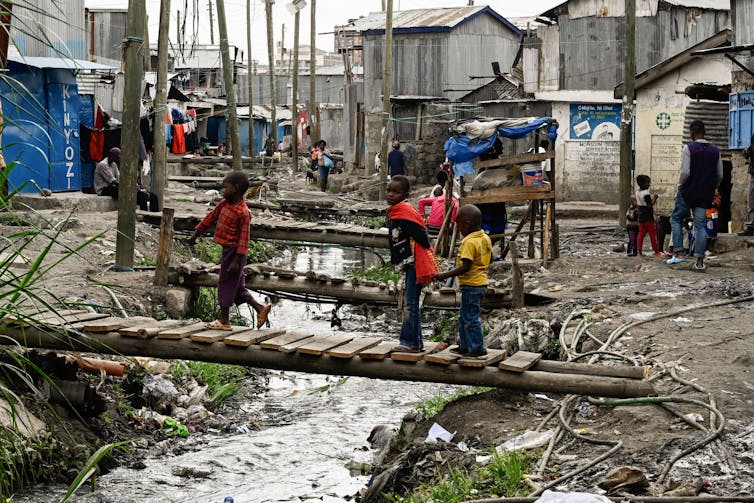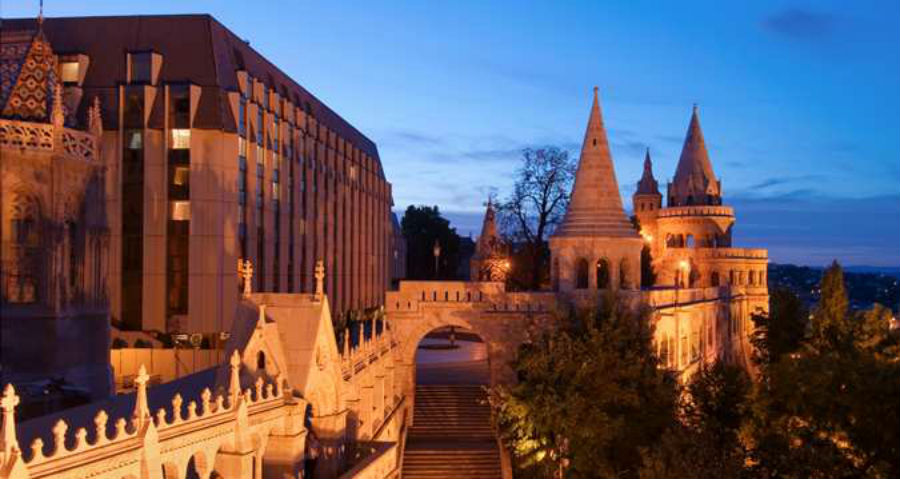
Ian Goldin, University of Oxford and Robert Muggah, Pontifical Catholic University of Rio de Janeiro (PUC-Rio)
With COVID-19 infections now evident in 176 countries, the pandemic is the most significant threat to humanity since the second world war. Then, as now, confidence in international cooperation and institutions plumbed new lows.
While the onset of the second world war took many people by surprise, the outbreak of the coronavirus in December 2019 was a crisis foretold. Infectious disease specialists have been raising the alarm about the accelerated pace of outbreaks for decades. Dengue, Ebola, SARS, H1N1, and Zika are just the tip of the iceberg. Since 1980, more than 12,000 documented outbreaks have infected and killed tens of millions of people around the world, many of them the poorest of the poor. In 2018, the World Health Organisation (WHO) detected outbreaks of six of its eight “priority diseases” for the very first time.
No one can say we weren’t warned.
Even as we attend to the countless emergencies generated by COVID-19, we need to think deeply about why the international community was so unprepared for an outbreak that was so inevitable. This is hardly the first time we’ve faced global catastrophes.
The second world war reflected the catastrophic failure of leaders to learn the lessons of the 1914-1918 war. The creation of the United Nations and Bretton Woods institutions in the late 1940s and early 1950s provided some grounds for optimism, but these were overshadowed by the Cold War. Moreover, the Reagan and Thatcher revolutions of the 1980s rolled back the capacity of governments to address inequality through taxation and redistribution and governments’ ability to deliver health and essential services.
The capacity of international institutions to regulate globalisation was undermined precisely at a time when they were most needed. The 1980s, 1990s and 2000s were a period of rapidly rising cross-border movements of trade, finance and people. The accelerated flow of goods, services and skills is one of the principal reasons for the most rapid reduction of global poverty in history. Since the late 1990s, more than 2 billion people have climbed
out of extreme poverty. Improved access to employment, nutrition, sanitation and public health, including vaccine availability, added over a decade in average life expectancy to the world’s population.
But international institutions failed to manage the downside risks generated by globalisation.
Far from empowering the United Nations, the world is governed by divided nations, who prefer to go it alone, starving the institutions designed to safeguard our future of the necessary resources and authority. The WHO shareholders, not its personnel, have failed dismally to ensure it can exercise its vital mandate to protect global health.
Butterfly defect
As the world becomes more connected, it also necessarily becomes more interdependent. This is the dark underbelly, the butterfly defect of globalisation, that if left unmanaged inevitably means that we will suffer escalating, increasingly dangerous systemic risks.

Andreas Solaro/AFP-GettyImages
One of the most graphic demonstrations was the 2008 financial crisis. The economic meltdown reflected a dangerous negligence by public authorities and experts in managing the growing complexities of the global financial system. Not surprisingly, the carelessness of the world’s political and economic elite cost them dearly at the ballot box. Campaigning on an explicitly anti-globalisation and anti-expert ticket, populists stormed to power.
Emboldened by public outrage, they have followed an ancient tradition, blaming foreigners and turning their backs on the outside world. The US president, in particular, spurned scientific thinking, spawned fake news, and shunned traditional allies and international institutions.
With evidence of infections rising fast, most national politicians now recognise the traumatic human and economic costs of COVID-19. The Centers for Disease Control’s worst-case scenario is that about 160 million to 210 million Americans will be infected by December 2020. As many as 21 million will need hospitalisation and between 200,000 and 1.7 million people could die within a year. Harvard University researchers believe that 20% to 60% of the global population could be infected, and conservatively estimate that 14 million to 42 million people might lose their lives.
The extent to which direct and excess mortality is prevented depends on how quickly societies can reduce new infections, isolate the sick and mobilise health services, and on how long relapses can be prevented and contained. Without a vaccine, COVID-19 will be a hugely disruptive force for years.
Where the damage will be worst
The pandemic will be especially damaging to poorer and more vulnerable communities within many countries, highlighting the risks associated with rising inequality.
In the US, over 60% of the adult population suffers from a chronic disease. Around one in eight Americans live below the poverty line – more than three-quarters of them live from paycheque to paycheque and over 44 million people in the US have no health coverage at all.
The challenges are even more dramatic in Latin America, Africa and South Asia, where health systems are considerably weaker and governments less able to respond. These latent risks are compounded by the failure of leaders such as Jair Bolsonaro in Brazil or Narendra Modi in India to take the issue seriously enough.
The economic fallout from COVID-19 will be dramatic everywhere. The severity of the impacts depends on how long the pandemic lasts, and the national and international response of governments. But even in the best case it will far exceed that of the 2008 economic crisis in its scale and global impact, leading to losses which could exceed $9 trillion, or well over 10% of global GDP.
In poor communities where many individuals share a single room and depend on going to work to put food on the table, the call for social isolation will be very difficult if not impossible to adhere to. Around the world, as individuals lose their incomes, we should expect rapidly rising homelessness and hunger.

Simon Maina/GettyImages
In the US a record 3.3 million people have already filed for unemployment benefit, and across Europe unemployment similarly is reaching record levels. But whereas in the richer countries some safety net exists, even though it is too often in tatters, poor countries simply do not have the capacity to ensure that no-one dies of hunger.
With supply chains broken as factories close and workers are quarantined, and consumers prevented from travelling, shopping, other than for food, or engaging in social activities, there is no scope for a fiscal stimulus. Meanwhile monetary policy has been stymied as interest rates are already close to zero. Governments therefore should focus on providing all in need with a basic income, to ensure that no-one starves as a result of the crisis. While the concept of basic income guarantees seemed utopian only a month ago, it now needs to be at the centre of every government’s agenda.
A global Marshall plan
The sheer scale and ferocity of the pandemic demands bold proposals. Some European governments have announced packages of measures to keep their economies from grinding to a halt. In the UK, the government has agreed to cover 80% of wages and self-employed income, up to £2,500 ($2,915) per month, and is providing a lifeline to firms. In the US, a previously unthinkable aid package of $2 trillion has been agreed, though this is likely just the beginning. A gathering of G20 leaders also resulted in a pledge of $5 trillion, though details are slim.
The COVID-19 pandemic provides a turning point in national and global affairs. It demonstrates our interdependence and that when risks arise we turn to governments, not the private sector, to save us.
The unprecedented economic and medical response in the rich countries is simply not available to many developing countries. As a result the tragic implication is the consequences will be far more severe and long lasting in poorer countries. Progress in development and democracy in many African, Latin American and Asian societies will be reversed. Like climate and other risks, this global pandemic will dramatically worsen inequality within and between countries.
A global Marshall plan, with massive injections of funding, is urgently needed to sustain governments and societies.
The COVID-19 pandemic is not the death knell of globalisation, as some commentators have suggested. While travel and trade are frozen during the pandemic, there will be a contraction or deglobalisation. In the longer term the continued growth in incomes in Asia, which is home to two-thirds of the world’s population, is likely to mean that travel, trade and financial flows will resume their upward trajectory.
But in terms of physical flows, 2019 will likely go down in history as the time of peak supply chain fragmentation. The pandemic will accelerate the reshoring of production, reinforcing a trend of bringing production closer to markets that was already under way. The growth of robotics, artificial intelligence and 3D printing, together with customers expecting quick delivery of increasingly customised products, politicians eager to bring production home, and businesses seeking to minimise the price of machines, removes the comparative advantages of low-income countries.

GettyImages
It is not only manufacturing which is being automated, but also services such as call centres and administrative processes that now can be more cheaply done by computers in the basement of a headquarters than by people at distant locations. This poses profound questions about the future of work everywhere. It is a particular challenge for low income countries with a young population of work seekers. Africa alone expects 100 million workers to enter the labour market over the next 10 years. Their prospects were unclear before the pandemic struck. Now they are even more precarious.
Implications for political stability
At a time when faith in democracy is at its lowest point in decades, deteriorating economic conditions will have far-reaching implications for political and social stability. There is already a tremendous trust gap between leaders and citizens. Some political leaders are sending mixed signals and citizens are receiving conflicting messages. This reinforces their lack of trust in public authorities and “the experts”.
This lack of trust can make responding to the crisis much more difficult at the national level, and also has undermined the global response to the pandemic.
While making urgent calls for multilateral cooperation, the United Nations is still missing in action, having been sidelined by the major powers in recent years. Promising to inject billions – even trillions – into the response, the World Bank and International Monetary Fund will need to ramp up their activities to have a meaningful impact.
Owing to a shortage of international leadership from the US, cities, businesses and philanthropies are stepping up. China has gone from villain to hero in responding to the pandemic, partly by extending its soft power – in the form of doctors and equipment – to affected countries. Singaporean, South Korean, Chinese, Taiwanese, Italian, French and Spanish researchers are actively publishing and sharing their experience, including by fast-tracking research on what works.
So far, some of the most inspiring action is nongovernmental. For example, city networks such as the US Conference of Mayors and National League of Cities are rapidly sharing good practice on how to keep infectious diseases from spreading, which should improve local responses. The Bill and Melinda Gates Foundation contributed $100 million to expanding local health capacities in Africa and South Asia. Groups like Wellcome Trust, Skoll, the Open Society Foundations, the UN Foundation, and Google.org are also scaling up assistance.
Needless to say, the complexities of globalisation will not be resolved by appeals to nationalism and closed borders. The spread of COVID-19 must be met with a similarly coordinated international effort to find vaccines, mobilise medical supplies and, when the volcanic dust settles, to ensure that we never again face what could be an even deadlier disease.
Now is not the time for recriminations: it is the time for action. National and city governments, businesses, and ordinary citizens around the world must do everything they can to flatten the epidemic curve immediately, following the examples set by Singapore, South Korea, Hong Kong, Hangzhou and Taiwan.
Coalition of the willing must lead global response
Now more than ever, we need a comprehensive global response. The Group of Seven and G20 leading economies appear rudderless under their current leadership. While promising to ensure attention to the poorest countries and to refugees, their recent virtual meeting offered too little too late. But this cannot be allowed to stop others acting to mitigate the impact of COVID-19. In partnership with G20 nations, a creative coalition of willing countries should take urgent steps to restore confidence not just in the markets but in global institutions.
The European Union, China and other nations will have to step up and lead a global effort, dragging the US into a global response which includes accelerating vaccine trials and ensuring free distribution once a vaccine and antivirals are found. Governments around the world will also need to take dramatic action toward massive investments in health, sanitation and basic income.

EFE-EPA
Eventually, we will get over this crisis. But too many people will have died, the economy will be severely scarred, and the threat of pandemics will remain. The priority then must be not only recovery, but also establishing a robust multilateral mechanism for ensuring that a similar or even worse pandemic never again arises.
There is no wall high enough that will keep out the next pandemic, or indeed any of the other great threats to our future. But what these high walls will keep out is the technologies, people, finance and most of all the collective ideas and will to cooperate that we need to address pandemics, climate change, antibiotic resistance, terror and other global threats.
The world Before Coronavirus and After Coronavirus cannot be the same. We must avoid the mistakes made throughout the 20th and early 21st centuries by undertaking fundamental reforms to ensure that we never again face the threat of pandemics.
If we can work together within our countries to prioritise the needs of all our citizens, and internationally to overcome the divides that have allowed the threats of pandemics to fester, out of the terrible fire of this pandemic a new world order could be forged. By learning to cooperate we would not only have learnt to stop the next pandemic, but also to address climate change and other critical threats.
Now is the time to start building the necessary bridges at home and abroad.![]()
Ian Goldin, Professor of Globalisation and Development; Director of the Oxford Martin Programme on Technological and Economic Change, University of Oxford and Robert Muggah, Associate Lecturer, Pontifical Catholic University of Rio de Janeiro (PUC-Rio)
This article is republished from The Conversation under a Creative Commons license. Read the original article.


